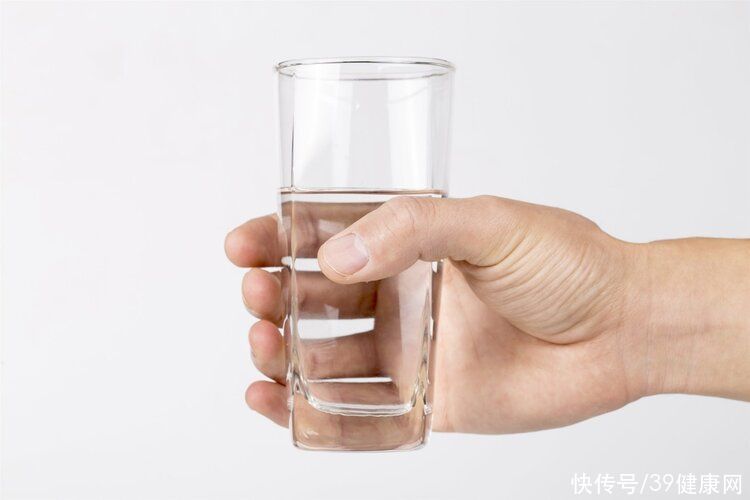Xiao Zhang, 26, is a manager of a travel company. After the epidemic, his business has improved, and staying up late and working overtime during peak season is the norm.
A month ago, Xiao Zhang developednausea, vomiting, headache, dizziness, neck pain< span>I waited for some symptoms, but they didn’t get better for several days. Later, I couldn’t even eat, and the whole person was groggy.
At first, there was no clear cause in several hospitals, and she was in a state of lethargy almost every day. Eventually, in a hospital, Zhang was diagnosed with intracranial venous sinus thrombosis and recovered. This may be related to Xiao Zhang’s overwork and excessive loss of body fluids.

Source: New Evening News
One, good quality, why is there thrombus?
Blood circulation is normal and the body is relatively healthy, but when some of the formed fractions in the blood coagulate into a solid block, a thrombus may appear.
The thrombus can be divided into red thrombus and white thrombus.The relative volume of red thrombus is relatively large, it is easy to block the thick blood vessels in the brain, causing large-scale cerebral infarction, and the disability rate and fatality rate are very high. The relative volume of white thrombus is relatively small, and the blocked blood vessels are relatively smaller, resulting in a smaller cerebral infarction area and lower harm.
Don’t underestimate the thrombus. Although it is small in size, its power is not small. It will travel around the body with the blood of the human body. Blockages can occur where the flow is slow, or in vessels smaller than the diameter of the thrombus.
Thrombosis in arterial vessels may cause distal arterial ischemia, leading to ischemic necrosis of organs or tissues. A blood clot in a vein can cause stasis of blood flow, causing swelling in the limb.
The most common site of venous thrombosis is the leg thrombus. Once the deep venous thrombosis of the lower extremity falls off, it is likely to cause lethal lung disease Embolism.

Second, if there is a blood clot in the body, the body will inform the body
Most thrombi are without warning, and even cause death in silence. In fact, once a thrombus occurs in the body, the body will tip off the news.
1. One arm or leg is swollen
One arm or leg Lump, most likely caused by deep vein thrombosis. A blood clot forms in the vein, preventing blood from returning to the heart, and the pressure inside the blood vessel spreads fluid into the leg tissue, causing swelling.
2. Unilateral arm or leg pain
After thrombosis, it may cause Inflammatory reaction causes swelling and pain in unilateral arm and leg, and as the disease progresses, it will develop progressively, and some complications such as pain and cramps will appear.

3. Numbness of limbs
When a thrombus appears in the blood, the limbs of the human body will experience pain and numbness due to insufficient blood supply. Therefore, if the limbs are numb for unknown reasons, be careful that the thrombus is at work.
4. Intermittent claudication
After thrombosis, once the blood vessel is severely blocked, the It may cause symptoms of intermittent claudication. If left unchecked and continue to develop, it may also lead to severe ischemia of the lower extremities, and even symptoms such as limb rupture, prolonged wound healing, and tissue necrosis.

Third, can you prevent blood clots by moving your toes?
Mr. Cardiovascular Wang once shared a case. He had rescued an old lady with a myocardial infarction. The old lady had symptoms of ventricular fibrillation when she was sent to the hospital. After the thrombus, blood flow returns. During the consultation, the family said that the old lady prevents blood clots by herself every day, and she moves her toes to prevent blood clots every day.
ActuallyThe prevention of blood clots through ankle pump exercises has certain conditions and limitations.
Ankle pump exercises can generally only prevent venous thrombosis in the lower extremities, and are more suitable for people who are bedridden for a long time and cannot go to the ground. The ankle pump exercise is to stretch your knees, hook your feet back, and then hold for a few seconds, straighten hard, and repeat, each set of five minutes is appropriate.

For ordinary people,It’s not enough to move your toes to prevent blood clots.
1. Sit for a while, exercise regularly
Sedentary for a long time It is easy to increase the risk of deep vein thrombosis. Studies have shown that the risk of deep vein thrombosis increases by 10% for every hour of sitting still.
Professor Wang Shenming, leader of the Department of Vascular Thyroid Breast Surgery at the First Affiliated Hospital of Sun Yat-sen University, suggested that proper exercise can promote blood circulation in the body and help prevent deep vein thrombosis. form.
2. Drink water frequently
Drinking more water can ensure that the body is adequately hydrated and avoid Blood concentration, play a role in preventing blood clots.

3. Quit smoking and alcohol
The nicotine in tobacco smoke will aggravate vasoconstriction and the body will be in a hypercoagulable state; drinking alcohol will damage blood cells, both of which may increase the risk of blood clots, so try to quit smoking and drinking.
4. Pay attention to diet
It is recommended to eat as light as possible, preferably less Eat some spicy and greasy foods, eat more foods rich in dietary fiber, and eat more deep-sea fish appropriately. The fatty acids in deep-sea fish also help prevent the formation of blood clots.

5. Rational drug use
For high-risk groups of venous thrombosis, such as fracture trauma patients and knee surgery patients, anticoagulant drugs can be used for prevention, but it should be noted that the use of drugs must be in accordance with the doctor’s advice.
6. Health Checkup
For patients with hypertension, obesity, diabetes, People at high risk of venous thrombosis, such as people with unhealthy lifestyles, sedentary people, and people affected by genetics, must do regular physical examinations.

Don’t underestimate the thrombus, once a blockage occurs in a certain part, it may cause serious as a result of. In life, it is necessary to do a good job in the prevention of blood clots, avoid sedentary time, drink more water, quit smoking and alcohol, eat a balanced diet and light taste, and high-risk groups should also do regular physical examinations. #HealthTrueKnowingPlan#
References:
[1] “What is the difference between “red” and “white” in blood clots? This kind of thrombosis has a high death and disability rate, but many people do not even know that they are a high-risk group! ”. I am a big doctor, official WeChat. 2020-03-18
[2] “This may be a signal of a “sneak attack” of blood clots: unilateral arm or leg has become thicker”. Life Times. 2019- 08-14
[3] “Thrombosis is most likely to be blocked in these 3 places, and there are 4 signals in the body that must not be delayed”. Health Times. 2021-10-13
[4] “I heard that moving your toes every day can prevent blood clots. In the end, thrombus still occurred”. Cardiovascular Doctor Wang. 2022-04-11
[5] 10 “thrombotic signals” that must not be ignored, it will be too late if you don’t pay attention! .China Medical Tribune.2018-02-06
Reprinting is prohibited without the author’s permission